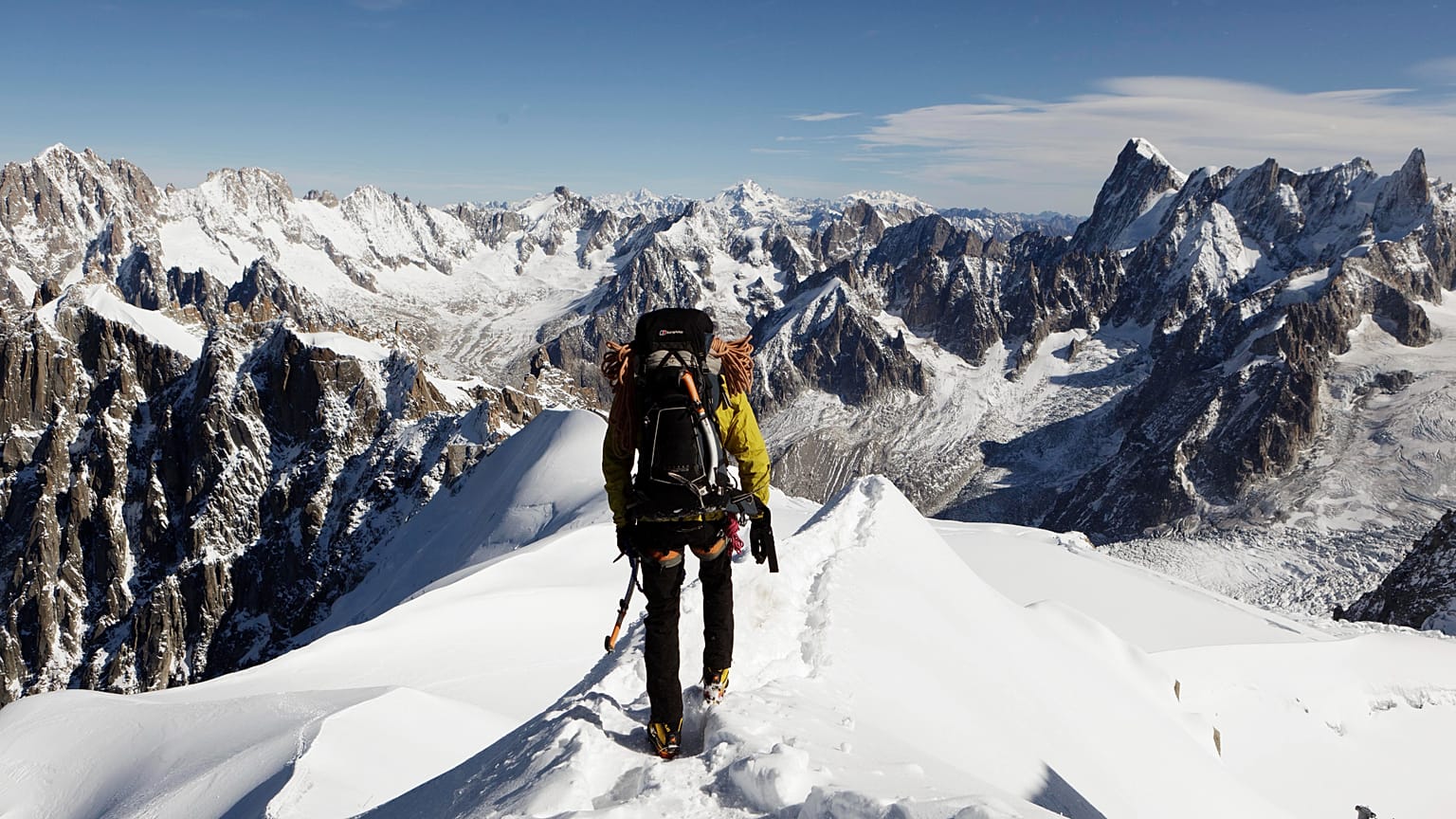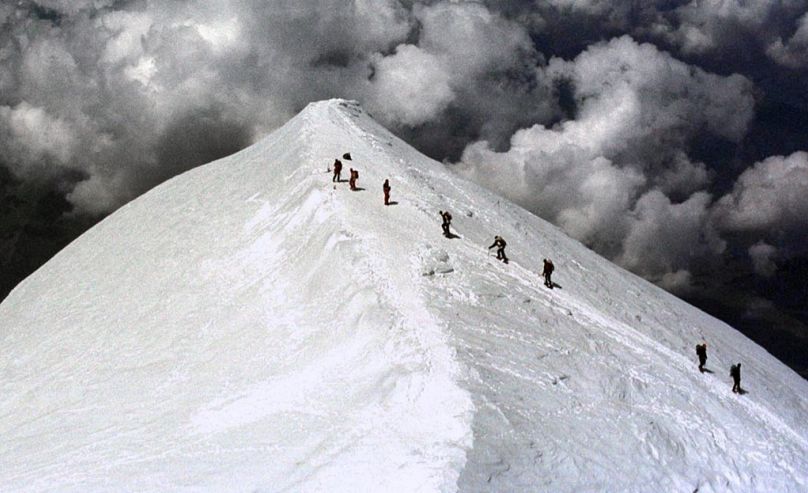Equipped with cutting-edge tools and a drone, around twenty people climbed the summit in mid-September to carry out point-by-point measurements.
Mont Blanc has shrunk by more than two metres in the last two years, researchers say.
The highest peak in Western Europe was measured at 4,805.59 metres in September 2023, 2.22 metres lower than the previous measurement in 2021, surveyors from the Haute-Savoie department announced on Thursday (5 October).
A thick covering of ice and snow means the mountain's height changes from year to year depending on wind and weather.
The difference measured this year may be due to lower rainfall during the summer and is something that has already been observed in the past, Jean des Garets, chief surveyor for the Haute-Savoie department said at a press briefing in Chamonix.
He urged people not to use the height measurement to "say any old thing" as Mont Blanc "could well be much taller in two years".
"We're gathering the data for future generations, we're not here to interpret them, we leave that up to the scientists."
Why do researchers measure Mont Blanc?
Equipped with cutting-edge tools and, for the first time, a drone, around twenty people divided into eight roped parties climbed to the summit in mid-September.
They carried out point-by-point measurements of Mont Blanc for several days.
Researchers have been measuring the rocky peak every two years since 2001 to gather information on the impact of climate change in the Alps.
"We've learned a lot from these measurement campaigns: we know that the summit is constantly changing in altitude and position, with changes of up to five metres," des Garets said.



















